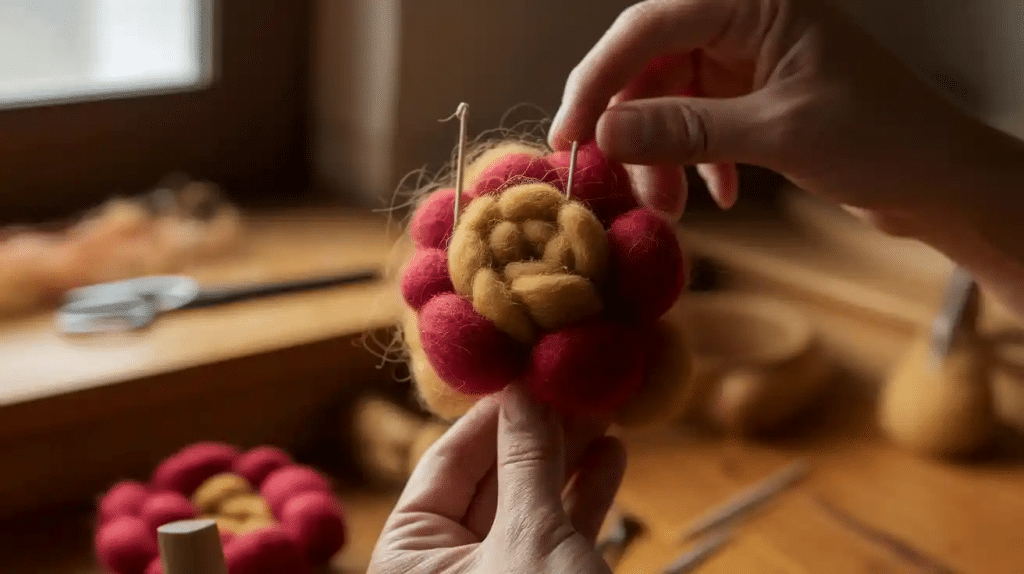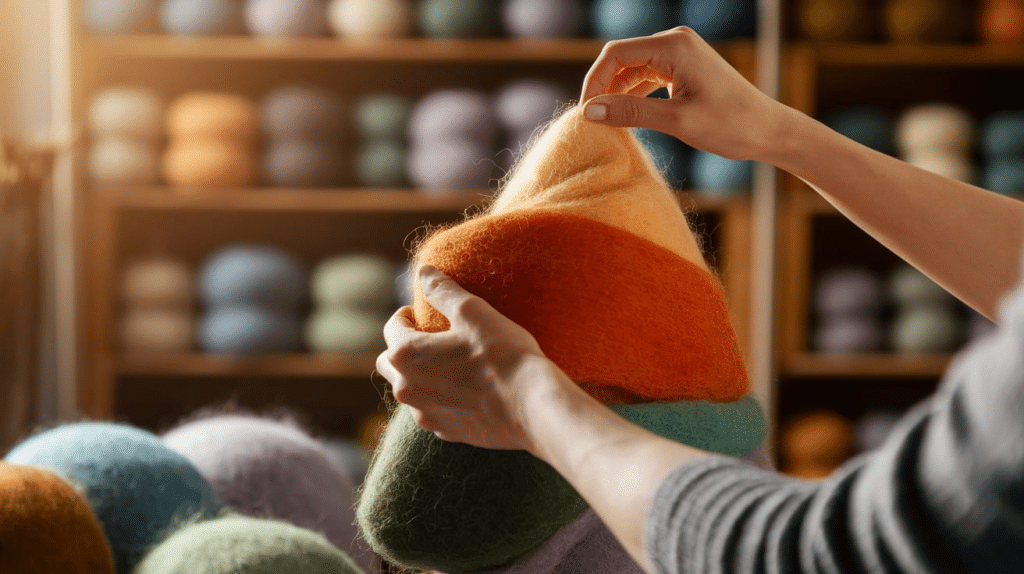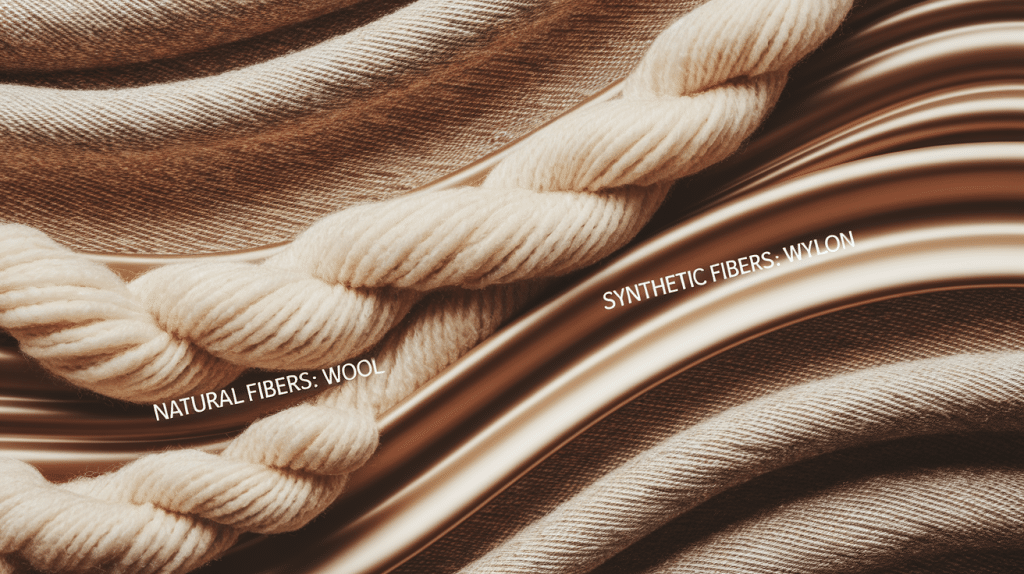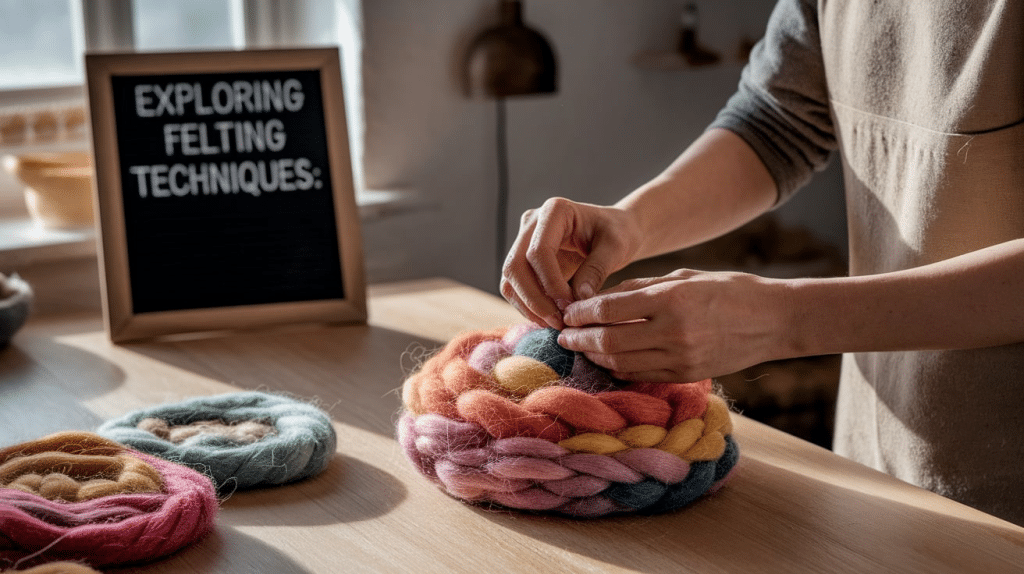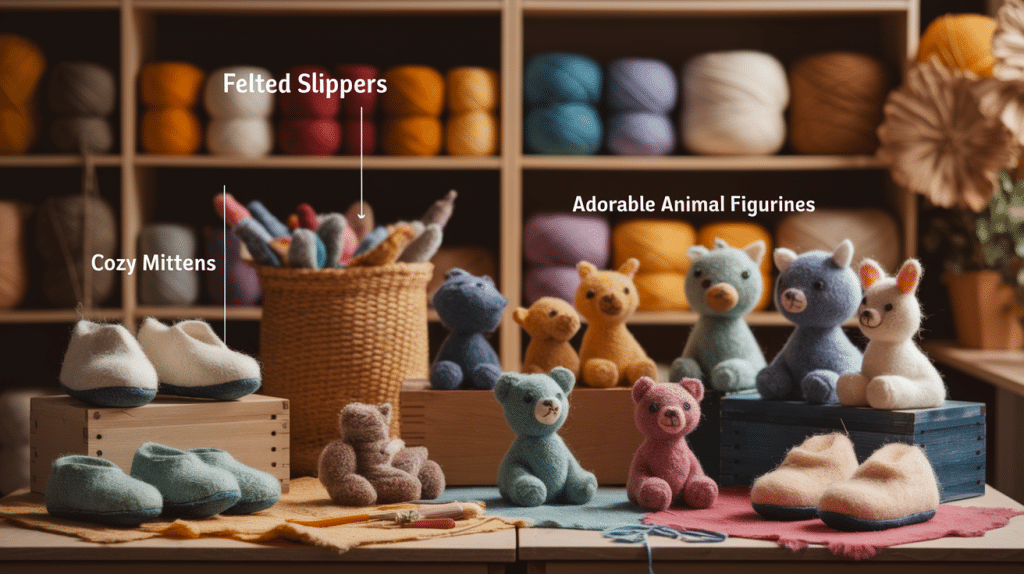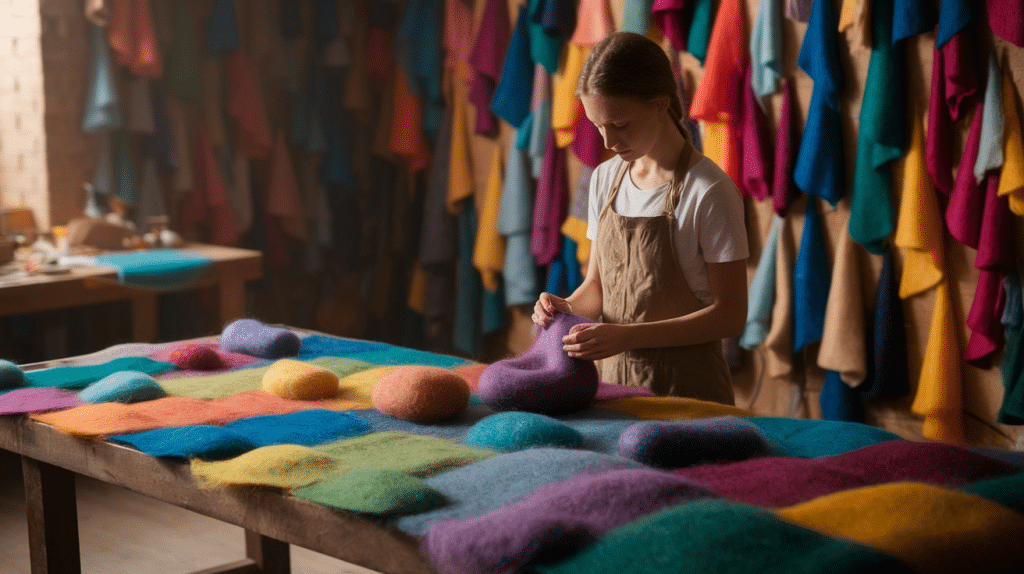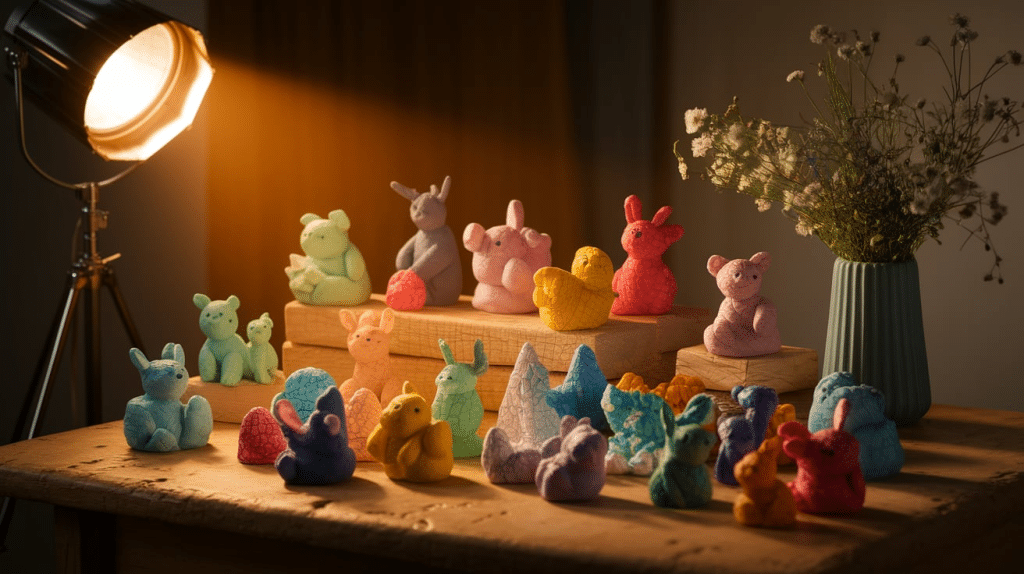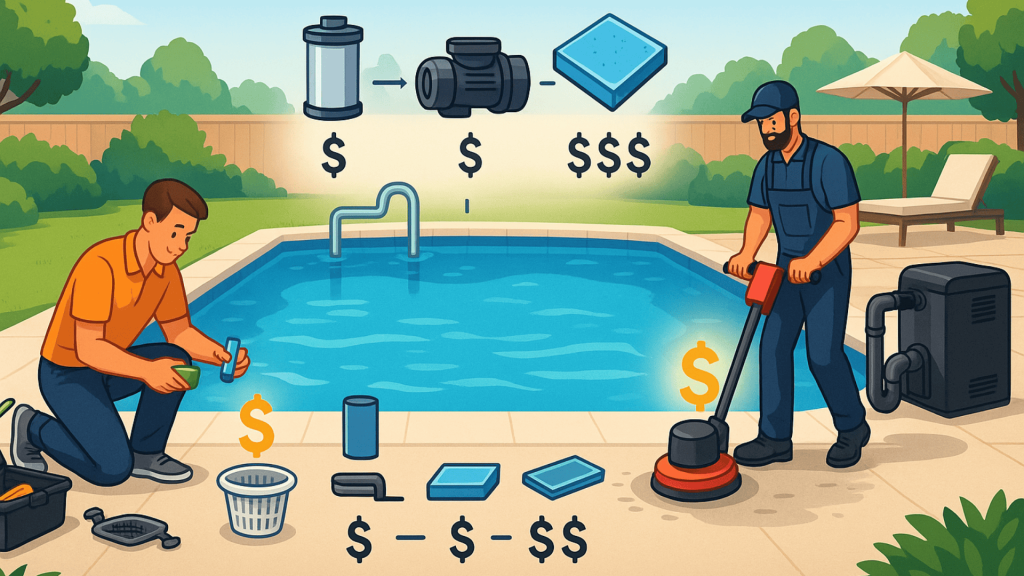Felting changes simple wool into magical, textured creations through an ancient and beautiful craft.
Artisans breathe life into fibers using time-honored techniques passed down through generations.
This versatile art form connects creativity with natural materials in stunning ways.
Fiber manipulation becomes a expedition of artistic expression and personal discovery.
What is Felting?
Felting is an ancient craft that magically changes wool fibers into dense, cohesive fabrics through pressure, moisture, and agitation.
Skilled artisans manipulate loose wool using techniques like wet felting or needle felting to create unique textile pieces.
The process involves interlocking wool fibers through mechanical action, resulting in strong and versatile materials.
Contemporary artists and crafters are drawn to felting’s tactile nature and incredible creative possibilities.
Handmade felt products range from delicate accessories to sculptural art pieces and practical home decor.
Sustainability and the meditative process of working with natural materials contribute to felting’s growing appeal.
Crafters appreciate the technique’s accessibility and potential for personal artistic expression.
How Felting Works
Felting is a process where fibers interlock, creating a dense fabric through heat, moisture, and agitation.
The key factors in felting are heat, moisture, and agitation, which help fibers bond together.
Wool fibers naturally bind together due to the presence of tiny scales on their surface.
These scales catch onto each other during the agitation process, facilitating the felting effect.
Felting can be done either by hand or with a machine, depending on the project.
As the fibers tangle, they create a stronger bond that forms the desired fabric.
Wool works best for felting because of its natural properties and structure.
Synthetic fibers are more challenging to felt compared to natural wool fibers.
Understanding how felting works will help improve your techniques and achieve better results.
The Science Behind Felting
Felting is an intricate process where wool fibers bond together due to physical and chemical changes.
Heat opens the wool scales, allowing them to intertwine.
Moisture helps to soften the fibers, making them more pliable.
Agitation, such as rubbing or rolling, encourages the scales to lock together, tightening the fabric.
Synthetic fibers lack the same natural scales, making felting more challenging.
When using wool, the more you agitate, the denser the fabric becomes.
This process is the foundation of creating felt, which can be used for crafts or clothing.
Difference between Natural vs. Synthetic Fibers
When it comes to felting, the type of fiber used has a significant impact on the process and results.
Here’s a comparison of natural and synthetic fibers to help you choose the best option for your project.
Felting Ability:
- Natural Fibers: Easily felted, especially wool
- Synthetic Fibers: Difficult to felt, low success rate
Fiber Structure:
- Natural Fibers: Contain scales on the fiber surface that interlock
- Synthetic Fibers: Smooth fibers with less interlocking potential
Durability:
- Natural Fibers: Strong when felted, but can shrink
- Synthetic Fibers: Less durable when felted
Eco-friendliness:
- Natural Fibers: Biodegradable and sustainable
- Synthetic Fibers: Non-biodegradable, environmental impact
Synthetic fibers can technically be felted, but they are less efficient in creating strong, durable results compared to natural fibers.
Exploring Felting Techniques: A Complete Guide
Felting is an ancient craft that transforms loose fibers into solid, intricate materials through various innovative techniques.
Artists and craftspeople have developed multiple methods to create unique textiles and artistic pieces.
Each felting technique offers distinct advantages and allows for incredible creative expression.
| Method | Description | Materials | Tools |
|---|---|---|---|
| Wet Felting | Water, soap, and agitation form fabric. | Wool, water, soap, bubble wrap, towels | Rolling pin, flat surface |
| Needle Felting | Barbed needles compress wool without water. | Wool, felting needles, foam pad | Felting needles, foam pad |
| Nuno Felting | Combines wool with fabrics like silk. | Wool, silk/chiffon, water, soap | Rolling pin, flat surface |
| Industrial | Machinery creates felt for industrial use. | Wool, heat, pressure | Specialized machinery |
Felting continues to evolve, blending traditional techniques with modern innovation.
From handcrafted art pieces to industrial applications, these methods showcase the incredible versatility of fiber manipulation.
Common Felting Projects
Felting offers endless creative possibilities, from simple DIY crafts to intricate wearable art.
It’s a versatile technique, ideal for home decor, fashion, and decorative items.
Whether you’re crafting for function or aesthetics, felted projects allow you to create unique, handmade pieces.
Here are some common felting projects that showcase the variety and appeal of this craft.
DIY Crafts and Home Decor
Felting can be used to make functional items like coasters, bowls, and wall art.
Wool’s versatility allows endless design possibilities.
Crafters can create simple yet stylish coasters for their homes, adding warmth and texture to any table.
Felted bowls can serve as decorative organizers, and felted wall art adds a personalized touch to your space.
Felted Clothing and Accessories
Create unique scarves, hats, bags, and slippers with felting techniques.
Felted scarves offer warmth and individuality, perfect for winter fashion.
Hats and bags made from felt create both stylish and functional accessories.
Felted slippers provide comfort and coziness, ideal for lounging around at home.
These wearable creations are easy to customize with colors and patterns.
Artistic and Decorative Uses
Felting also allows you to create sculptures, miniatures, and ornaments for artistic expression.
You can craft intricate figures with wool, giving them depth and texture.
Miniature felted animals make adorable additions to any collection or gift.
Ornaments made through felting can be customized for holidays or special occasions, adding charm and creativity to your decorations.
Tools and Materials Needed for Felting
To get started with felting, you’ll need a few basic tools.
As you advance, some additional tools and materials can enhance your projects.
Here’s a breakdown of what you need for both beginner and advanced felting.
Basic Tools for Beginners
-
Wool roving: Soft, unspun wool for felting.
-
Felting needles: Barbed needles for compressing and tangling fibers.
-
Mild soap: To help with wet felting.
-
Felting mats: Protect your surface while felting.
Optional Tools for Advanced Projects
-
Needle holders: For added comfort and control.
-
Embellishments: Buttons, beads, and threads to decorate projects.
-
Molds: To shape felt into specific forms or designs.
With these tools, you’ll be able to create beautiful felting projects, whether you just want to start or explore advanced techniques.
Benefits of Felting
Felting is a therapeutic craft that fosters creativity while promoting stress relief through hands-on artistic expression and mindful techniques.
The rhythmic process of changing wool fibers into textured artwork provides a meditative activity that improves mental well-being.
Practitioners experience a sense of accomplishment as they change simple materials into personalized creations that reflect their artistic vision.
Felting fosters a profound connection with natural materials, promoting mindfulness and offering a respite from a digital-dominated daily life.
Tips for Getting Started with Felting
Felting is a fun and therapeutic craft, but getting started can come with its own set of challenges.
Here are some tips to help you avoid common mistakes and stay safe:
-
Avoid choosing the wrong wool for your project; different types create varying textures and effects.
-
Over-felting or under-felting can make your project fall apart or feel too stiff.
-
Monitor the felting process closely to achieve the right firmness for your creation.
-
Handle sharp needles carefully, especially when needle felting, to prevent injury.
-
Always use a foam pad to support the needle during felting.
-
Supervise kids or groups closely when felting, as needles can cause injuries if mishandled.
-
Start with simple projects and build your skills gradually.
-
With patience and practice, you’ll enjoy a rewarding creative journey.
Felting can be a deeply satisfying experience as long as you take the proper precautions and start with the basics.
Summing It Up
Felting offers a therapeutic path to creativity and personal fulfillment.
Crafters find joy in transforming raw wool into beautiful, meaningful objects.
The practice connects us with traditional crafts and our innate artistic potential.
Each felted piece tells a unique story of patience, skill, and imagination.
Wool becomes a medium of expression, bridging ancient techniques with modern artistic vision.
Mindful crafting provides a peaceful escape from our fast-paced digital world.
Felting invites everyone to explore their creativity, one fiber at a time.
To read more Activities related Blogs. Explore here


